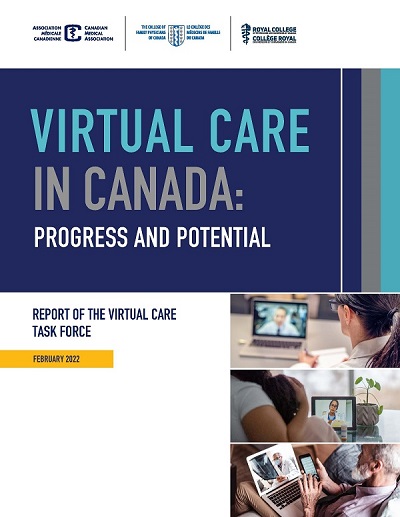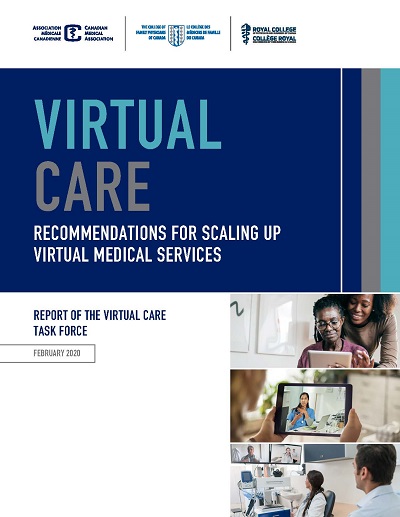Virtual care
Virtual care (e.g., telehealth or video consultations) has the potential to increase access to primary and specialist care for patients in Canada, particularly those in rural and remote communities.
While the technology to deliver virtual care exists, many barriers remain to its widespread adoption — including payment models, licensure and quality standards, interoperability and governance, and education and training.
About the Virtual Care Task Force
The Virtual Care Task Force was created in March 2019 by the Canadian Medical Association, the College of Family Physicians of Canada and the Royal College of Physicians and Surgeons of Canada.
In addition, the task force comprised representatives from regulatory bodies, medical and health care organizations, e-health industry, patients and families, and caregivers.
The Virtual Care Task Force’s work focused on four key areas:
- Interoperability and governance
- Licensure and quality of care
- Payment models
- Medical education
The Virtual Care Task Force has released two reports.
Download the Virtual Care Task Force reports

Virtual Care in Canada: Progress and Potential (February 2022) [PDF]
The implementation of virtual care was accelerated when the COVID-19 pandemic was declared in March 2020. This report reflects on the recommendations published by the group in its first report two years ago and identifies new recommendations based on the experience of virtual care during the COVID-19 pandemic.

Virtual Care: Recommendations for Scaling up Virtual Medical Services (February 2020) [PDF]
This report outlines the actions required to promote excellence in virtual care in Canada. The recommendations detail steps Canadian physicians feel are necessary to optimize the use of virtual care tools and platforms by physicians and patients in a way that meets patient needs and satisfies physician concerns.